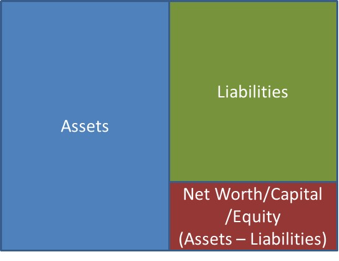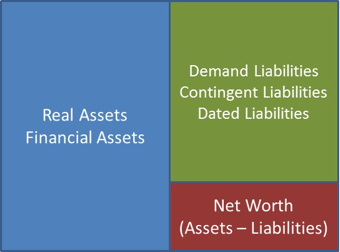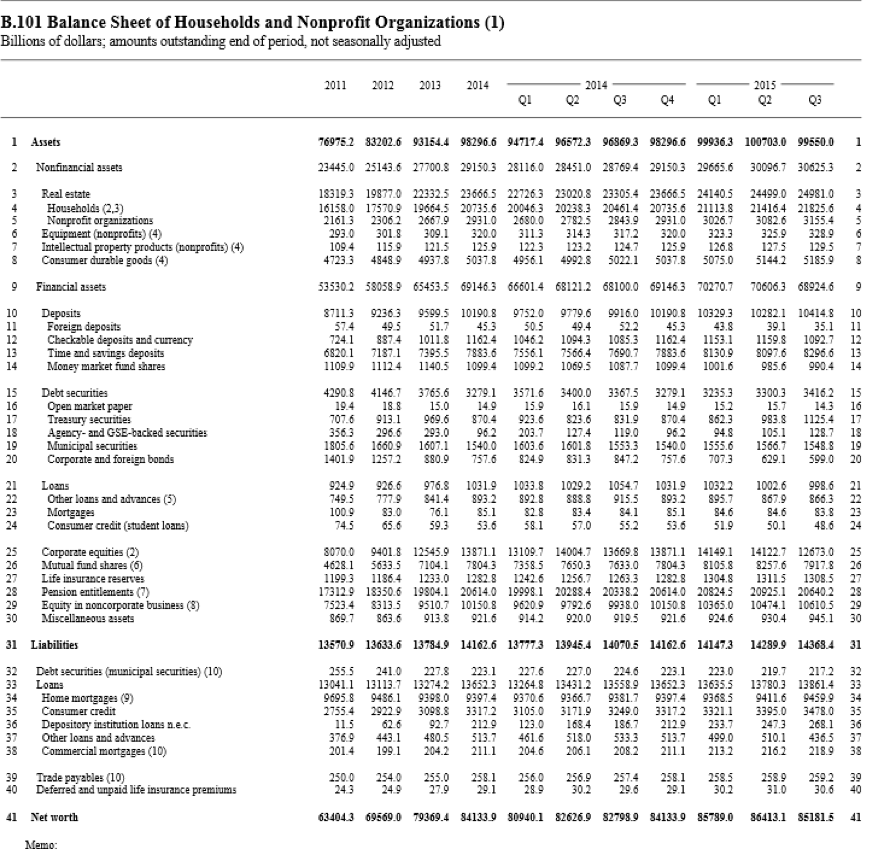ただ、図が多いのだが、うまく張ることができなかっ
The roots of MMT do not lie in Keynes – Bill Mitchell – Modern Monetary Theory 2015/8/25
http://bilbo.economicoutlook.net/blog/?p=31681
My own view is that many of the important insights in Keynes were already sketched out in some detail in Marx. Further, the work of the Polish economist Michał Kalecki was much deeper in insight than the work of his contemporary, Keynes. But for me the real sticking point against Keynes was his view that fiscal deficits should be balanced over the business cycle and that would allow governments to pay back debt incurred in the deficit years. That view has crippled progressive thought ever since and is antithetical to MMT.
私自身の見解では、ケインズの重要な洞察の多くはすでにマルクスである程度詳細にスケッチされています。 さらに、ポーランドのエコノミストMichałKaleckiの仕事は、彼の現代のケインズの仕事よりもはるかに洞察が深かった。しかし、私にとってケインズに対する真の注目点は、財政赤字は景気循環にわたって均衡がとれ、それによって政府が赤字期に発生した債務を返済することが可能になるという彼の見解でした。 その見解はそれ以来進歩的な思考を無力にしており、MMTとは正反対です。
Modern Monetary Theory(MMT、現代貨幣理論または現代金融理論)の日本語で読める情報を集めようと思っています。
まじめな入門一押しは、リッキー氏の
ただ、図が多いのだが、うまく張ることができなかっ
What is a balance sheet?
It is an accounting document that records what an economic unit owns (its “assets”) and owes (its “liabilities”). The difference between its assets and liabilities is called net worth, or equity, or capital.

Figure 0a. A balance sheet
There are many different ways to classify assets and liabilities. For our purpose, a balance sheet can be detailed a bit more as follows:

Figure 0b. A simple balance sheet
Financial assets are claims on other economic units and real assets may be reduced to physical things (cars, buildings, machines, pens, desks, inventories, etc.) but may also include intangible things (e.g., goodwill). Demand liabilities are liabilities that are due at the request of creditors (e.g., cash can be withdrawn from bank accounts at will by account holders), contingent liabilities are due when a specific event occurs (e.g., life insurance payments to a widow), dated liabilities are due at specific periods of time (e.g., interest and principal mortgage payments are due every month).
Balance sheets can be constructed for any economic unit. That unit can be a person, a firm, a sector of the economy, a country, anybody or anything with assets and liabilities. Table 1 is the balance sheet of U.S. households (and non-profit organizations) in the United States. In the third quarter of 2015, U.S. households owned $99.6 trillion worth of assets and owed $14.4 trillion worth of liabilities, making net worth equal to $85.2 trillion (99.6 – 14.4). Households held $30.6 trillion of real assets, $68.9 trillion of financial assets. Their two main liabilities were home mortgages ($9.5 trillion) and consumer credit, i.e. credit cards, student debts, etc. ($3.5 trillion).

Balance sheet rules
A balance sheet follows double-entry accounting rules so A BALANCE SHEET MUST ALWAYS BALANCE, that is, the following must always be true:
Assets = Liabilities + Net Worth
The practical, and central, implication is that a change in one item on the balance sheet must be offset by at least one change somewhere else so that a balance sheet stays balanced.
Let’s start with a very simple balance sheet. The only asset is a house worth $100k that was purchased by putting down 20k and asking for $80k from a bank:

Figure 1. A simple balance sheet
What is the impact of a bank forgiving $40k of principal (i.e. outstanding amount owed) on the mortgage?

Figure 2. Effect of Repayment of Mortgage Principal
The value of mortgage went down by 40k and the value of net worth went up by 40k so that the accounting equality is preserved.
Going back to the first balance sheet, what is the impact of the value of the house going up by $20k?

Figure 3. Effect of higher house price
The asset value went up by $20k and the net worth went up by $20 and here again the accounting equality is preserved.
Sometimes, to get to the point more quickly and to highlight the changes, economists prefer to use so-called “T-accounts” (because the shape of the table looks like a T) that record only the changes in the balance sheet.

Figure 4. T-account that records the repayment of the mortgage principal

Figure 5. T-account that records the higher house value
The offsetting is shown more clearly. It comes from opposite changes in two items on the right side of the balance sheet (Figure 4), and a change in asset and net worth by the same amount (Figure 5). Of course these are not the only two ways the offsetting is done to preserve the accounting equality. We will encounter other cases as we move forward. The point is that one must change at least two things in a balance sheet to make sure that the equality A = L + NW is preserved. One must always ask: what is the offsetting entry change? This has practical implications when studying how banks and central bank operate.
What makes the balance sheet change?
One can classify factors that change a balance sheet in three categories:
- Cash inflows and outflows: net cash flow
- Incomes and expenses: net income
- Capital gains and capital losses: net change in the market value of assets and liabilities
These categories are recorded more carefully in other accounting documents than the balance sheet, but this section focuses on their relation to the balance sheet.
Net Cash Flow
Cash inflows and cash outflows lead to a change in the amount of monetary balances held by an economic unit, i.e. a change in the amount of physical currency or funds in a bank account held on the asset side. Some assets lead to cash inflows while some liabilities and capital (dividend payments) lead to cash outflows.

Figure 6. Balance sheet and cash flow
If the cash inflows are greater than the cash outflows, monetary assets held by an economic unit go up. The economic unit can use them to buy assets or pledge them to leverage its balance sheet (see Post 7). If net cash flow is negative, then monetary-asset holdings fall and the economic unit may have to go further into debt to pay some of its expenses.
Going back to our very simple balance sheet, assume that a salary of $40k is earned and that part of the salary is used to service a 30-year fixed-rate 10 % mortgage. Assuming linear repayment of principal to simplify (actual mortgage servicing is calculated differently), the cash flow structure looks like this:

Figure 7. Balance sheet and cash flows, an example
The balance sheet at the beginning of the following year is (assuming all cash flows involve actual cash transfer instead of electronic payments):

Figure 8. Balance sheet after the cash-flow impacts
Quite a few things have change in the balance sheet. There is a net inflow of cash of $29.3k, the principal of the mortgage fell by the amount of principal repaid, and net worth accounts for these two changes.
Net Income
Net income leads to a change in the net worth:
Current Net worth = Previous Net worth + Net income of the period
Net income (e.g., earnings before taxes is a proxy of net income) can be positive or negative so net worth may rise or fall. In the previous example (Figures 7 and 8), net cash flow and net income are the same thing; however, not all incomes necessarily lead to cash inflows (see Post 4, and 10).
Capital Gains and Capital Losses
Finally, the value of assets and liabilities may change because of changes in their market value. If accounting is done on a “mark-to-market” basis, i.e. by valuating balance-sheet items based on their current market value, these changes will be accounted in the balance sheet and net worth will be affected accordingly:
Current Net Worth = Previous Net Worth + Net income of the period + Net capital gains of the period
The example of Figure 3 is a simple illustration of the impact of capital gains.
The effect of a change in the market value of assets and liabilities may not be accounted in the balance sheet if they are valued on a cost basis. For financial assets, there are three options to record their value. Level 1 valuation uses the available market price. Level 2 valuation, for assets that do not have an active market, uses a proxy market as a point of reference. Level 3 valuation, also called mark-to-model (or more cynically “mark-to-myth”), uses an in-house model to give a dollar value to the asset. During the 2008 crisis, major financial institutions argued that the market prices of some assets did not reflect their true value because of a panic in markets. The Securities and Exchange Commission allowed them to move to level 2 or level 3 valuation to keep up the value of their assets. Many analysts have been critical of this decision and considered it to be a convenient way to hid major losses of institutions.
That is it for today! Following posts will apply all this to banks and central bank.
[Revised 7/21/2016]
ただ、図が多いのだが、うまく張ることができなかった。。。。
原文は
http://neweconomicperspectives.org/2016/01/money-banking-part-1.html
です。。。。。いつもながら、ご本人からの許可は得ていないので、
あくまでも個人の学習の参考までに。。。
貨幣と銀行 - 1
[原文タイトルはMoney and Banking なので、
銀行というより、銀行業務にしたほうがよかったかもしれないんだけれど。。。]
エリック・ティモワーニュ
ここ何年か、貨幣と銀行(M&B)講義担当者として四苦八苦していた。
この講義は一貫性を欠いており、学生たちに
貨幣の部と銀行の部との間の結びつきを理解させることに困難を
感じていた。問題の大部分は、M&B用の教科書のせいである。その教科書は、
時代遅れの表記法についてはともかく、
一貫したコアを欠いたバラバラの章を寄せ集めただけの物であった。
それ故、筆者はその教科書を使うことをあきらめ、自分のやり方で進めることにした。
金融システムのコアは財務書類から成っているのであり、
それらの中でも、特に重要なのがバランスシートである。
バランスシートには、M&B講義の教程範囲内の基礎の大部分が含まれている。
即ち、銀行および中央銀行による貨幣創造、貨幣の本質、金融危機、
証券化、金融的依存関係、なんでもバランスシートに関係せざるを得ないのである。
ミンスキーがよく語ったように、どんな理屈を言たところで、
バランスシートで表現できないのであれば、その論理には問題があるのだ。
それ故、筆者の「教科書」の第1章ではバランスシートのメカニズムを扱うこととし、
そしてそれがこのM&Bに関するブログ・シリーズの第一歩となる。まあ、
会計というのは退屈だが、カギとなる会計的概念についてきちんと把握しておくことが、
金融メカニズムを理解するうえでは絶対必要なのだ。M&Bの教科書は普通は
「貨幣」の章で始まるのだけれど、本ブログではもっと後回しにし、
バランスシートや、例えば「現在価値」のような金融概念が十分理解された後で、
学習する。出来れば週1回更新するように務めるが、赤ん坊と
4歳児の面倒を見る合間に書くことになるので、まあ、
その通り行くかどうか。。。このブログで、M&Bの全領域を
カバーしようということではない。まずは銀行、中央銀行、そして貨幣という順序で
進めてゆくつもりだ。
バランスシートとは何か?
バランスシートとは、会計書類の一種で、
その経済主体が所有しているもの(「資産」)と、
他の経済主体に負っているもの(「負債」)を記録したものである。
資産と負債の差額は「純資産」または「持ち分」「資本」などと呼ばれる。
[※ここに最初の図が入る・・・]

図 0aバランスシート
資産と負債の分類には異なる数多くのやり方がある。
我々の目的にとっては、バランスシートは、細かくは以下の通りに内訳される。
[※二つ目の図]

図 0b単純なバランスシート
金融資産とは他の経済主体に対する請求権であり、実物資産とは、
通常は減価する物体(自動車、建築物、機械、ペン、机、棚卸資産、等々)である。
要求払い負債とは、債権者の要求をもって満期とする負債
(例えば、銀行口座からは、時を問わず口座名義人の要求があり次第、
現金が即座に払戻しされる)であり、偶発債務とは、
ある特定の事象が起こった時に満期となる債務(例えば、生命保険)である。
有期負債とは、あらかじめ期日の定めのある負債
(例えばモーゲージ債の金利[の見越計上]及び元本の償還は、毎月決まっている)である。
バランスシートは、すべての経済主体について作成することができる。経済主体は、
一個人かもしれないし一企業かもしれないし、
経済全体の一つの部門ということもあるし、一国、その他、
資産と負債を所有する物であれば何でもよい。以下は、合衆国における家計部門
(および、NPO)のバランスシートである(Finanicial Accounts of
the United Statesより)。2015年の第3四半期、合衆国の家計部門は
996億ドルの価値の資産を所有しており、144億ドルの価値の負債を負っていた。したがって
純資産は852億ドル(996-144)に等しい。
家計部門は306億ドルの実物資産、689億ドルの金融資産を有していた。
主要な負債は二つで、ホーム・モーゲージ債(95億ドル)と、消費者金融、
すなわち、クレジットカード、自動車ローン、学資ローン等々であった(35億ドル)。
[※最初の表が入る]
B.101 Balance Sheet of Household and Non profit Organization
バランスシートの諸法則
バランスシートは、複式簿記の原理に従う。例えば、
「バランスシートは常にバランスしなければならない」。すなわち、
以下の式が常に成立しなければならない。
資産 = 負債 + 純資産
実務的な、かつ中心的な含意は、バランスシート上のある項目の変化は必ず、
他の少なくとも一つの項目の変化と等しくなり、そうすることで、バランスシートは
常にバランスを保つということである。
ごく単純なバランスシートから始めよう。資産は一つだけで
100,000ドルの価値を持つ住宅家屋である。これを購入するため、
20,000ドルが現金払いされ、80,000ドルは銀行からの借入に頼る。
[※図1が入る]

図 1単純なバランスシート
モーゲージ債の元本(未償還残高)の内、40,000ドルが償還されたとき、
どのように変化するだろうか。
[※図が入る]

図 2モーゲージ債元本償還の効果
モーゲージ債の価値は40,000ドルだけ引き下げられ、
純資産の価値は40,000だけ増加する。こうして会計等式は守られる。
最初のバランスシートに戻って、住宅家屋の価値が20,000ドル上昇したら、
どうなるだろうか。
[※ 図]

図 3住宅価格上昇の効果
モーゲージ債の価値は20,000ドル引き上げられ、
そして純資産が20,000ドル増加することになり、ここでもまた会計等式が守られている。
論点をより素早く把握し、変化をより可視的にするため、
エコノミストたちはしばしば好んで「Tアカウント」と呼ばれる表示を使う。
(表の枠がT字の形になるのでそう呼ばれる。)ここではバランスシートの変化のみを記録する。
[※ バランスシートの変化を示した図]

Figure 4. T-account that records the repayment of the mortgage principal
図 4Tアカウント上で、モーゲージ債元本償還を記録する場合
[※ バランスシートの変化を示した図]

図 5Tアカウント上で、住宅価格の上昇を記録する場合
両者が等しいことが、より鮮明に示される。これはバランスシートの
右側の二つのアイティムがそれぞれ反対方向に同額変化する場合(図 4)と、
資産と純資産が同額変化する場合(図 5)とある。勿論、
これらだけが会計等式を守り貸借を一致させるただ二つだけの方法というわけではない。
先へ進むほどに、他のやり方も見るであろう。ここでのポイントは、
A(資産) = L(負債) + NW(純資産) の等式を守るためには
バランスシート上では少なくとも二つの項目に確実に変化がなければならない、
ということである。常にこう問わなければならない。すなわち、この変化に対応し、
どの反対勘定が変化するのか。これは、銀行及び中央銀行が
いかに運営されているのかを学習するに際しての、実務的含意である。
何がバランスシートを変化させるのか?
バランスシートを変化させる要因を、3つのカテゴリーに分類することができる。
キャッシュ・インフローとアウトフロー、すなわち、ネット・キャッシュフロー
収入と費用、すなわち純所得
キャピタル・ゲインとキャピタル・ロス、すなわち、資産・負債の市場価値の純変化
これら諸カテゴリーは、バランスシートではなく
他の書類によってより慎重に記録されているのだが、
このブログではバランスシートとの関係に焦点が合わされるであろう。
ネット・キャッシュフロー
キャッシュ・インフロー及びキャッシュ・アウトフローは
経済主体が保有している資金の額に変化をもたらす。つまり、
資産側で、物理的に保有されている通貨または銀行口座に保有されている預金が
変化することになる。ある資産はキャッシュ・インフローをもたらす一方で、
ある負債および資本はキャッシュ・アウトフロー(例えば配当支払い)をもたらす。
[※仕訳ボックスのような図からあっちこっちに線や矢印が出ている図]

図 6バランスシートとキャッシュフロー
もし、キャッシュ・インフローのほうがキャッシュ・アウトフローより大きければ、
経済主体が保有している貨幣性資産は増加する。経済主体は、
それを使って資産を購入したり、借り入れによってレバレッジをかけることができる。
もしネット・キャッシュフローがマイナスなら、貨幣性資産の残高は減少し、
そして経済主体は、場合によっては、費用の一部を賄うために債務額を
さらに増やさなければならないことになる。
当期資金残高 = 前期資金残高 + 当期純キャッシュフロー
ごく単純なバランスシートに戻って、40,000ドルの給料を稼ぎ、
その給与の中から30年間固定金利10%のモーゲージ債の償還を行ったと仮定しよう。
単純化のため元本返済は定額法によるものとすると(実際の
モーゲージ債の償還計算は違う)、キャッシュフローの構造は、図のようになる。

図 7バランスシートとキャッシュフロー、一例
翌年の期首のバランスシートは(すべてのキャッシュフローは
電送ではなく実物現金による支払いで行われると仮定する)以下の通り。
[※最後の図]

図 8キャッシュフローの変動後のバランスシート
バランスシート内ではきわめてわずかな変化しかない。現金の純インフローは
29,300ドルであり、モーゲージ債残高(つまり、未償還の金額)は
元本が弁済された金額分減少する。純資産の変化はこれら二つの変化の差額である。
純所得
純所得は純資産の変化を引き起こす。
当期純資産 = 前期純資産 + 当期純所得
純所得(例えば、税引き前所得を純所得の代わりに使うことができる)は、
プラスにもマイナスにもなり得るので、
純資産も増加するかもしれないし、減少するかもしれない。先の例(図7、8)においては、
純キャッシュフローおよび純所得は同じものということでよかった。しかしながら、
すべての所得が資金の増加になるわけではない。この点は後で銀行を学習する際に説明しよう。
キャピタル・ゲインとキャピタル・ロス
最後に、資産および負債の価値は、その市場価値の変化によって
変化する。もし「市場 対 市場」原則会計[時価会計]が採用されているなら、
つまり、バランスシート項目が現在の市場価値をベースにして評価されているのなら、
これらの変化はバランスシート上で以下のように説明され、
また純資産もそれに応じて変化することになる。
当期純資産 = 前期純資産 + 当期純所得 + 当期純キャピタル・ゲイン
図 3の例では、キャピタル・ゲインの影響が簡単に説明されている。
これで本日は終わり!次回はこの原理を銀行及び中央銀行に当てはめてみよう。
3 Comments:
このコメントは投稿者によって削除されました。
キーン『次なる金融危機』がMMTについて最後に少し触れている
信用創造についても書かれているし
最初にミンスキーの紹介があってオススメ
キーンは2008年の金融危機を予見した12人のうちのひとり
ゴドリーもそのうちのひとり
ゴドリー、キーンはミンスキーの影響を受けている
ミンスキーは政府の負債より民間負債の方が重要と考え
それを受けてゴドリーは部門ごとに数値分析をし
キーンはカオス理論を応用し視覚化した
ミンスキーは当初ケインズの影響を受けていたが
徐々にカレツキに傾倒していった
カレツキとケインズの往復書簡が残っているが
カレツキの方が資本主義の不安定性を指摘している
ミンスキーはその視角を受け継いでいる
ミンスキーは循環的な経済理論を持ち得なかったが
カレツキにはそれがあった
187 あなたの1票は無駄になりました[] 2019/05/10(金) 01:02:56.82 ID:8VKYBSKP0
キーン・(ミンスキー)モデルの3変数:
雇用率(Employment)
産出[=GDP]に占める賃金の割合(Wage Share)
民間負債の対GDP比率(Bank Share[=主流派が軽視したミンスキー的認識])
(それぞれx,y,z)
https://4.bp.blogspot.com/-2zZ3mi6JZ10/XMwwi5u6i1I/AAAAAAABigY/uNLE0bJRfx00r5xafZYcQWo3stgyGtK5wCLcBGAs/s1600/IMG_4925.PNG
https://www.nbp.pl/badania/seminaria/23v2016-1.pdf
コメントを投稿
<< Home